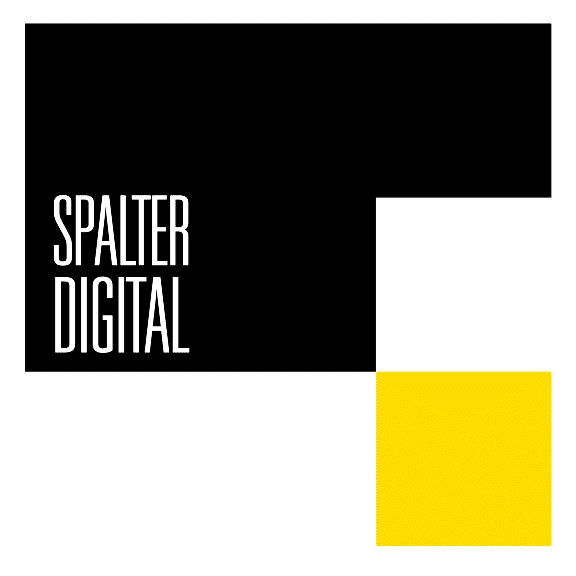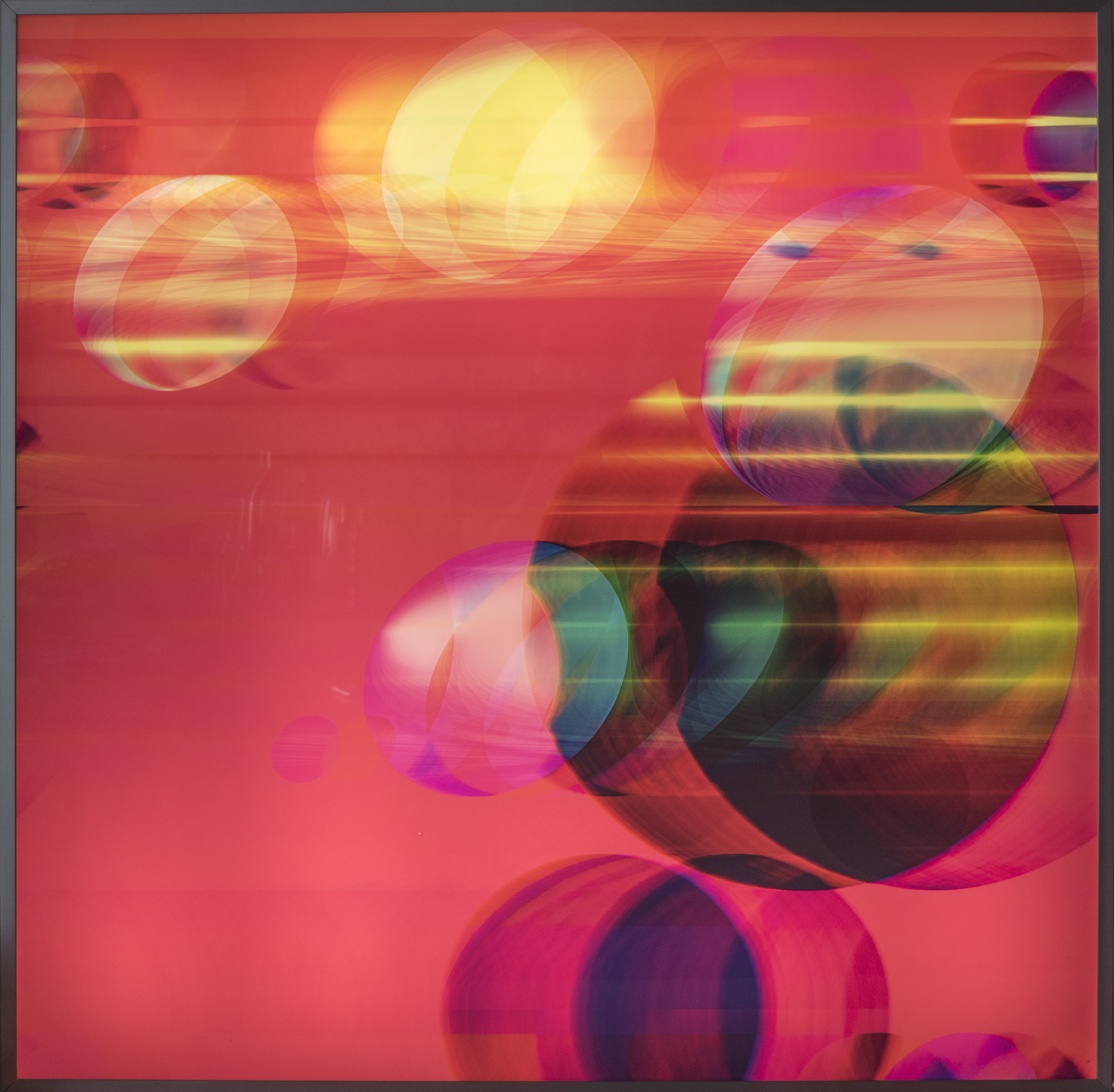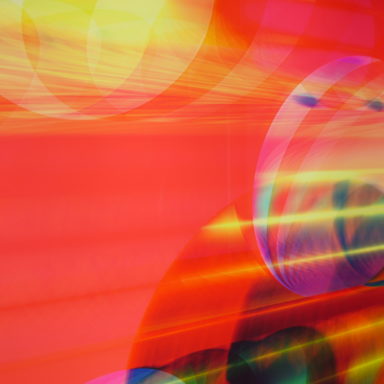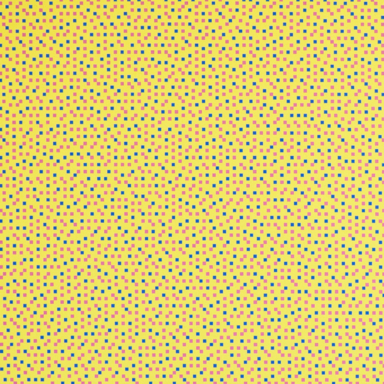Basic Information
Title: Glitchometry Circles #4
Artist(s):
Daniel Temkin
Date Created: 2013
Unframed Dimensions: 36.5 x 36.5 in.
Medium: digital c-print on Duratrans light box
Inventory ID: Temkin-2013-01
Description
excerpt from the artist’s website regarding this work:
“Each image begins as one or a few black squares or circles. They are sonified — imported into an audio editor. Sound effects are added to individual color channels, as if they were sound, transforming the image. Because the tool is used in an unconventional way, there is no immediate way to monitor the effect. The image manipulator has a sense of what each effect does, but no precise control over the result. It is a wrestling with the computer, the results of which are these images. As Curt Cloninger describes databending, “like painting with a very blunt brush that has a mind of its own.” My piece for nooart explains more about this take on the glitch style
They are a selection of the Rhizome ArtBase at the New Museum.
They were developed, in part, at the Alfred IEA Residency and at Signal Culture”




